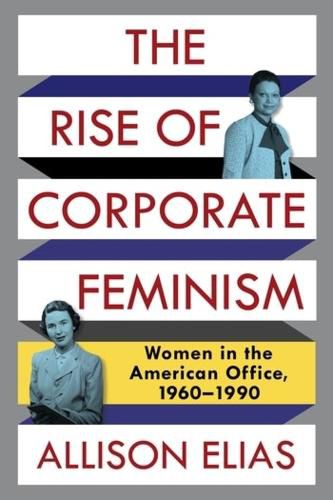Readings Newsletter
Become a Readings Member to make your shopping experience even easier.
Sign in or sign up for free!
You’re not far away from qualifying for FREE standard shipping within Australia
You’ve qualified for FREE standard shipping within Australia
The cart is loading…






From the 1960s through the 1990s, the most common job for women in the United States was clerical work. Even as college-educated women obtained greater opportunities for career advancement, occupational segregation by gender remained entrenched. How did feminism in corporate America come to represent the individual success of the executive woman and not the collective success of the secretary?
Allison Elias argues that feminist goals of advancing equal opportunity and promoting meritocracy unintentionally undercut the status and prospects of so-called pink-collar workers. In the 1960s, ideas about sex equality spurred some clerical workers to organize, demanding raises and respect, while others pushed for professionalization through credentialing. This cross-class alliance pushed a feminist agenda that included unionizing some clerical workers and advancing others who had college degrees into management. But these efforts diverged in the 1980s, when corporations adopted measures to move qualified women into their upper ranks. By the 1990s, corporate support for professional women resulted in an individualistic feminism that focused on the needs of those at the top. Meanwhile, as many white, college-educated women advanced up the corporate ladder, clerical work became a job for lower-socioeconomic-status women of all races.
The Rise of Corporate Feminism considers changes in the workplace surrounding affirmative action, human resource management, automation, and unionization by groups such as 9to5. At the intersection of history, gender, and management studies, this book spotlights the secretaries, clerks, receptionists, typists, and bookkeepers whose career trajectories remained remarkably similar despite sweeping social and legal change.
$9.00 standard shipping within Australia
FREE standard shipping within Australia for orders over $100.00
Express & International shipping calculated at checkout
From the 1960s through the 1990s, the most common job for women in the United States was clerical work. Even as college-educated women obtained greater opportunities for career advancement, occupational segregation by gender remained entrenched. How did feminism in corporate America come to represent the individual success of the executive woman and not the collective success of the secretary?
Allison Elias argues that feminist goals of advancing equal opportunity and promoting meritocracy unintentionally undercut the status and prospects of so-called pink-collar workers. In the 1960s, ideas about sex equality spurred some clerical workers to organize, demanding raises and respect, while others pushed for professionalization through credentialing. This cross-class alliance pushed a feminist agenda that included unionizing some clerical workers and advancing others who had college degrees into management. But these efforts diverged in the 1980s, when corporations adopted measures to move qualified women into their upper ranks. By the 1990s, corporate support for professional women resulted in an individualistic feminism that focused on the needs of those at the top. Meanwhile, as many white, college-educated women advanced up the corporate ladder, clerical work became a job for lower-socioeconomic-status women of all races.
The Rise of Corporate Feminism considers changes in the workplace surrounding affirmative action, human resource management, automation, and unionization by groups such as 9to5. At the intersection of history, gender, and management studies, this book spotlights the secretaries, clerks, receptionists, typists, and bookkeepers whose career trajectories remained remarkably similar despite sweeping social and legal change.